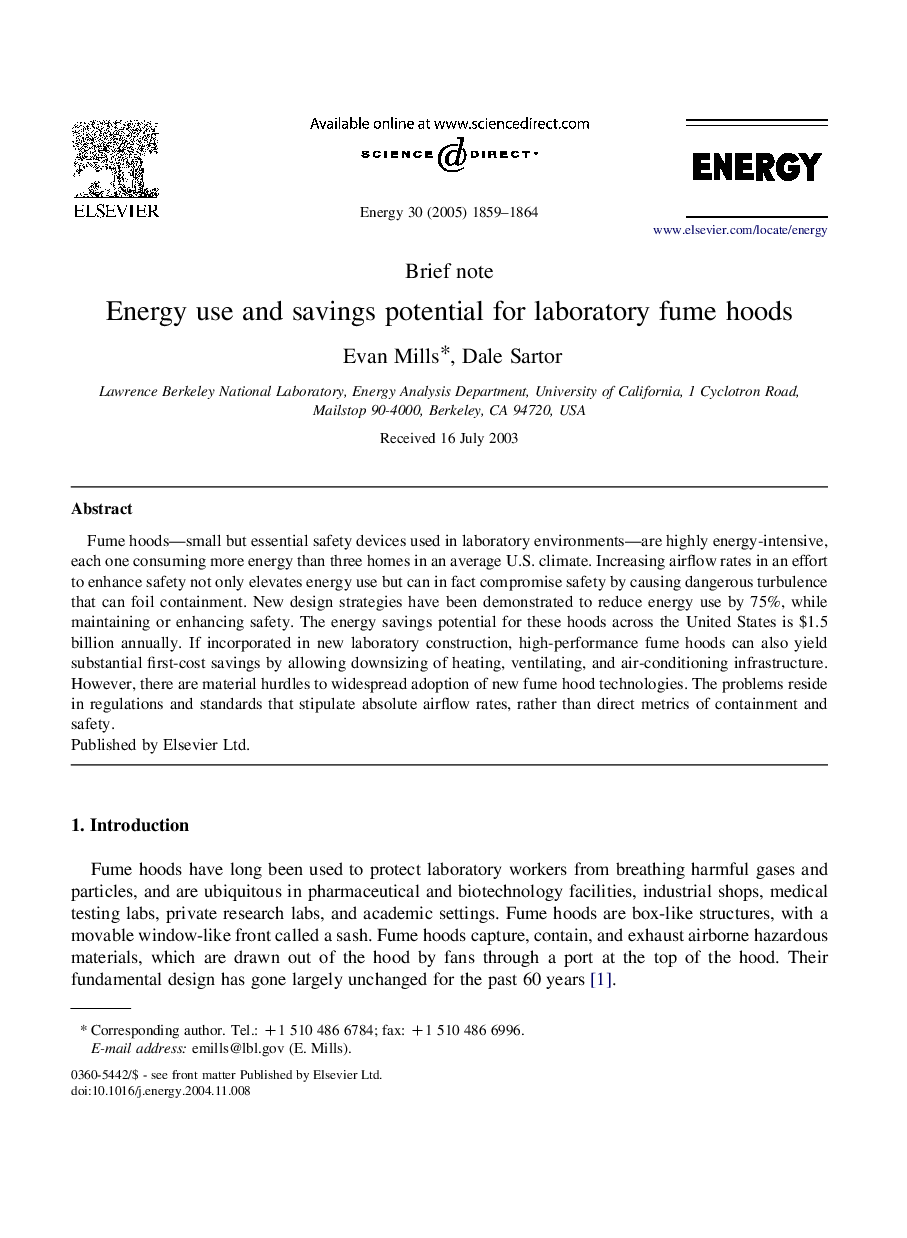| Article ID | Journal | Published Year | Pages | File Type |
|---|---|---|---|---|
| 1736635 | Energy | 2005 | 6 Pages |
Fume hoods—small but essential safety devices used in laboratory environments—are highly energy-intensive, each one consuming more energy than three homes in an average U.S. climate. Increasing airflow rates in an effort to enhance safety not only elevates energy use but can in fact compromise safety by causing dangerous turbulence that can foil containment. New design strategies have been demonstrated to reduce energy use by 75%, while maintaining or enhancing safety. The energy savings potential for these hoods across the United States is $1.5 billion annually. If incorporated in new laboratory construction, high-performance fume hoods can also yield substantial first-cost savings by allowing downsizing of heating, ventilating, and air-conditioning infrastructure. However, there are material hurdles to widespread adoption of new fume hood technologies. The problems reside in regulations and standards that stipulate absolute airflow rates, rather than direct metrics of containment and safety.
